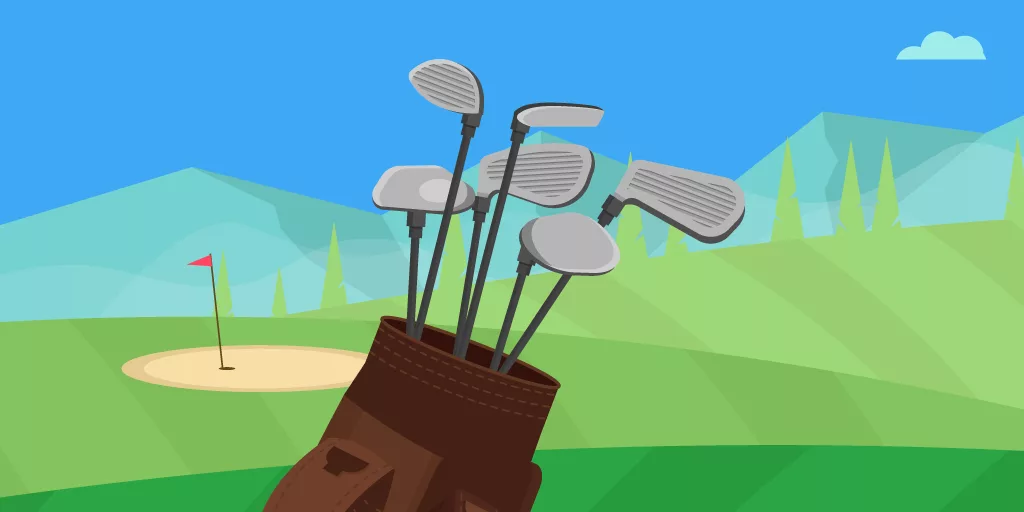
Understanding fairway wood specifications is vital for optimizing your golf game. In this article, we'll explore the essentials of loft, lie angle, and shaft options for fairway woods.
Key Takeaways
- Loft and lie angles determine ball flight and shot accuracy
- Shaft choices affect clubhead speed, ball flight, and comfort
- Clubhead design and adjustability affect control and personalization
Let's Unpack Loft
Loft might seem like a jargon-laden term, but it simply refers to the angle the clubface makes with an invisible line drawn straight up and down. Think of it as the 'tilt' of your fairway woods, dictating the distance your ball flies, the trajectory it follows, and the spin it gathers.
It's all about balance here. More loft results in a higher ball flight and increased spin - perfect if you're looking to nail those soft landings. On the other hand, a fairway wood with less loft delivers a lower, piercing trajectory and less spin, promising more roll after your ball touches down.
You'll find that fairway woods come with loft ranges from 13 to 24 degrees. If you're seeking long-distance shots, lower-lofted woods like the 3-wood are your ally. For those looking for extra control and versatility, higher-lofted woods, like the 5, 7, or 9-wood, step into the spotlight.
The Lowdown on Lie Angle
Imagine your club at address. The lie angle is the angle made between the shaft and the ground. Sounds simple enough, right? But this humble angle plays a vital role in influencing the orientation of your clubface at impact, holding the keys to your shot's accuracy and consistency.
A well-matched lie angle leads to a square impact, the secret sauce to consistent, accurate shots. But if the lie angle is off, expect misaligned shots and ball-striking inconsistencies. Luckily, you can adjust the lie angle to complement your swing mechanics and body type, fine-tuning your shot consistency and accuracy. A club fitting expert can be your guiding star in this process.
Shaft Choices and Their Impact
Regarding shafts, you have two main contenders - steel and graphite. Steel shafts bring the heft, offering you more control and dependable performance. On the other hand, the lighter graphite shafts can help boost your clubhead speed and distance, although they might sacrifice a bit on the control front.
Your shaft's flex also plays a pivotal role in shaping your clubhead speed and ball flight. If you've got a faster swing, a stiffer flex can boost your accuracy and control. Golfers with slower swings might find more flexible shafts offering them improved distance and trajectory.
Size does matter when it comes to the length of your shaft. Longer shafts can help you reach greater distances but may skimp on control. Conversely, shorter shafts promise better control, even if they can't deliver the same distance. It's all about aligning the shaft length with your swing mechanics and comfort.
The Power of Custom Fitting
One size doesn't fit all in golf, and that's where custom-fitted fairway woods shine. Designed to complement your unique swing and physical characteristics, they can improve your shot consistency, accuracy, and overall performance.
When heading for a fitting session, keep an eye on key factors like lie angle, shaft length, shaft flex, and clubhead design. These will help you fine-tune your fairway wood performance.
Finding the right fitter is crucial - look for a seasoned pro with a stellar reputation. Remember, your fitter is your teammate in this journey, so be open about your preferences and goals to get the most out of the fitting experience.
Delving into Clubhead Design
The design of the clubhead can be a game-changer. If you value forgiveness, larger clubheads are a safe bet, offering a larger sweet spot. On the other hand, smaller clubheads provide enhanced control and workability.
In the world of clubhead shapes, traditional designs exude classic charm. But if you're eager to embrace the latest advancements, modern designs incorporate cutting-edge materials and technology, pushing the boundaries of performance.
The design of the clubhead's sole shouldn't be overlooked either. A well-crafted sole minimizes turf interaction, ensuring you achieve clean contact with the ball and versatile performance, no matter the course conditions.
Navigating Adjustable Features
Adjustable hosel systems and movable weight technology have stormed into the golf world, adding a new dimension to fairway woods.
An adjustable hosel system gives you the power to fine-tune loft and lie angles, so you can optimize ball flight and shape your shots just how you like them. Movable weight technology, on the other hand, lets you adjust weight distribution based on your preferences for ball flight and forgiveness.
But remember, with greater power comes greater complexity. Adjustable fairway woods are undoubtedly versatile but might be more complicated and pricey than traditional models.
Conclusion
As you navigate these options, keep your skill level and personal preferences in mind. Ultimately, it's about finding a fairway wood that feels like an extension of your swing. Happy golfing!
Frequently Asked Questions
Here are answers to frequently asked questions about fairway woods.